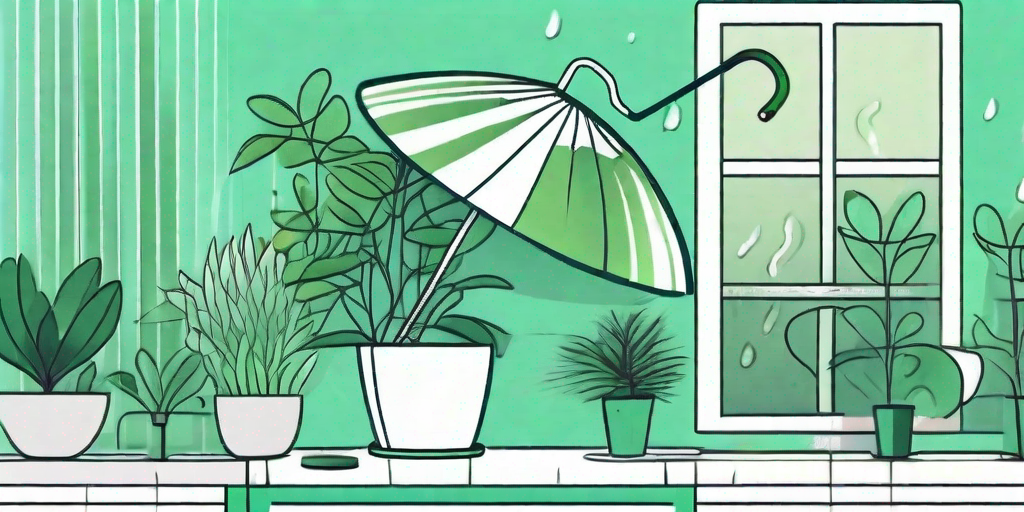
Umbrella plants, known scientifically as Schefflera, are a popular choice for indoor and outdoor gardening enthusiasts. They're attractive, easy to care for, and can add a touch of tropical flair to any space. But what happens when your beloved umbrella plant starts secreting a sticky substance? It's not a sign of an overly affectionate plant, but rather, a signal that something may be amiss.
The Sticky Situation: Unraveling the Mystery
First things first, let's get to the root of the problem. The sticky substance on your umbrella plant leaves is actually honeydew, a sugary secretion produced by certain insects. It's not the plant's way of saying "I love you," but rather a sign of a pesky pest problem. So, if you've been feeling flattered by your plant's sticky affection, it's time to switch gears and get into detective mode.
Now, you might be wondering, "Why on earth would insects turn my beautiful umbrella plant into a sticky mess?" Well, these little critters are not just being naughty for the sake of it. They're simply trying to survive, and your plant provides the perfect buffet for them. The honeydew is a byproduct of their feeding process, and while it might be a sweet treat for them, it's a sticky nightmare for us gardeners.
Identifying the Culprits
The Usual Suspects: Aphids, Mealybugs, and Scale Insects
When it comes to umbrella plant pests, there are three main culprits: aphids, mealybugs, and scale insects. Aphids are tiny, pear-shaped insects that come in a variety of colors. They're like the vampires of the insect world, sucking the sap out of your plant and leaving a sticky mess behind.
Mealybugs, on the other hand, are small, white, and fluffy. They might look cute and harmless, but don't let their appearance fool you. These bugs are just as destructive as aphids, if not more so.
Lastly, we have scale insects. These pests are a bit harder to spot because they look like small, brown bumps on the plant's leaves or stems. They're the ninjas of the insect world, blending in with the plant and causing damage without being noticed.
Spotting the Signs
Aside from the sticky honeydew, there are other signs that your umbrella plant might be under attack. Yellowing leaves, stunted growth, and a general decline in the plant's health are all red flags. If you notice any of these symptoms, it's time to roll up your sleeves and get to work.
Remember, early detection is key. The sooner you identify and address the problem, the better your chances of saving your plant and maintaining a clean, healthy garden.
Combatting the Sticky Situation
Step 1: Manual Removal
The first step in dealing with a pest infestation is manual removal. This involves physically removing the pests from the plant. You can do this by wiping the leaves with a damp cloth or using a soft brush to dislodge the bugs.
While this method can be time-consuming, it's a safe and effective way to deal with a small infestation. Plus, it gives you the satisfaction of knowing that you're taking direct action to protect your plant.
Step 2: Insecticidal Soap
If manual removal doesn't do the trick, or if the infestation is too large to handle manually, it's time to bring out the big guns: insecticidal soap. This is a safe and effective way to kill the pests without harming your plant.
Simply mix the soap with water according to the instructions on the bottle, and spray it directly onto the affected areas of the plant. Be sure to cover all surfaces, as the soap needs to come into direct contact with the pests to be effective.
Step 3: Biological Control
If you're dealing with a persistent infestation, or if you're just a fan of natural solutions, biological control might be the way to go. This involves introducing natural predators into your garden to keep the pest population in check.
Ladybugs, lacewings, and parasitic wasps are all effective against aphids, mealybugs, and scale insects. Plus, they're a lot more pleasant to have around than a bunch of sticky, destructive pests!
Preventing Future Infestations
Now that you've dealt with the current infestation, it's time to think about prevention. After all, the best defense is a good offense, right?
Regularly inspect your plants for signs of pests, and take action at the first sign of trouble. Keep your plants healthy by providing them with the right growing conditions, and consider introducing beneficial insects into your garden to keep the pest population in check.
Frequently Asked Questions
- Why are my umbrella plant leaves sticky?
The sticky substance on your umbrella plant leaves is likely honeydew, a sugary secretion produced by certain insects such as aphids, mealybugs, and scale insects.
- How do I get rid of the sticky substance on my umbrella plant leaves?
You can get rid of the sticky substance by treating the pest infestation. This can involve manual removal, using insecticidal soap, or introducing natural predators into your garden.
- How can I prevent future infestations?
Regularly inspect your plants for signs of pests, provide your plants with the right growing conditions, and consider introducing beneficial insects into your garden.
There you have it, the sticky truth about umbrella plant leaves. While dealing with a pest infestation can be a bit of a hassle, it's all part of the gardening journey. Remember, every challenge is an opportunity to learn and grow, both as a gardener and as a plant parent. So, roll up your sleeves, put on your detective hat, and get ready to tackle the sticky situation head-on. Happy gardening!















